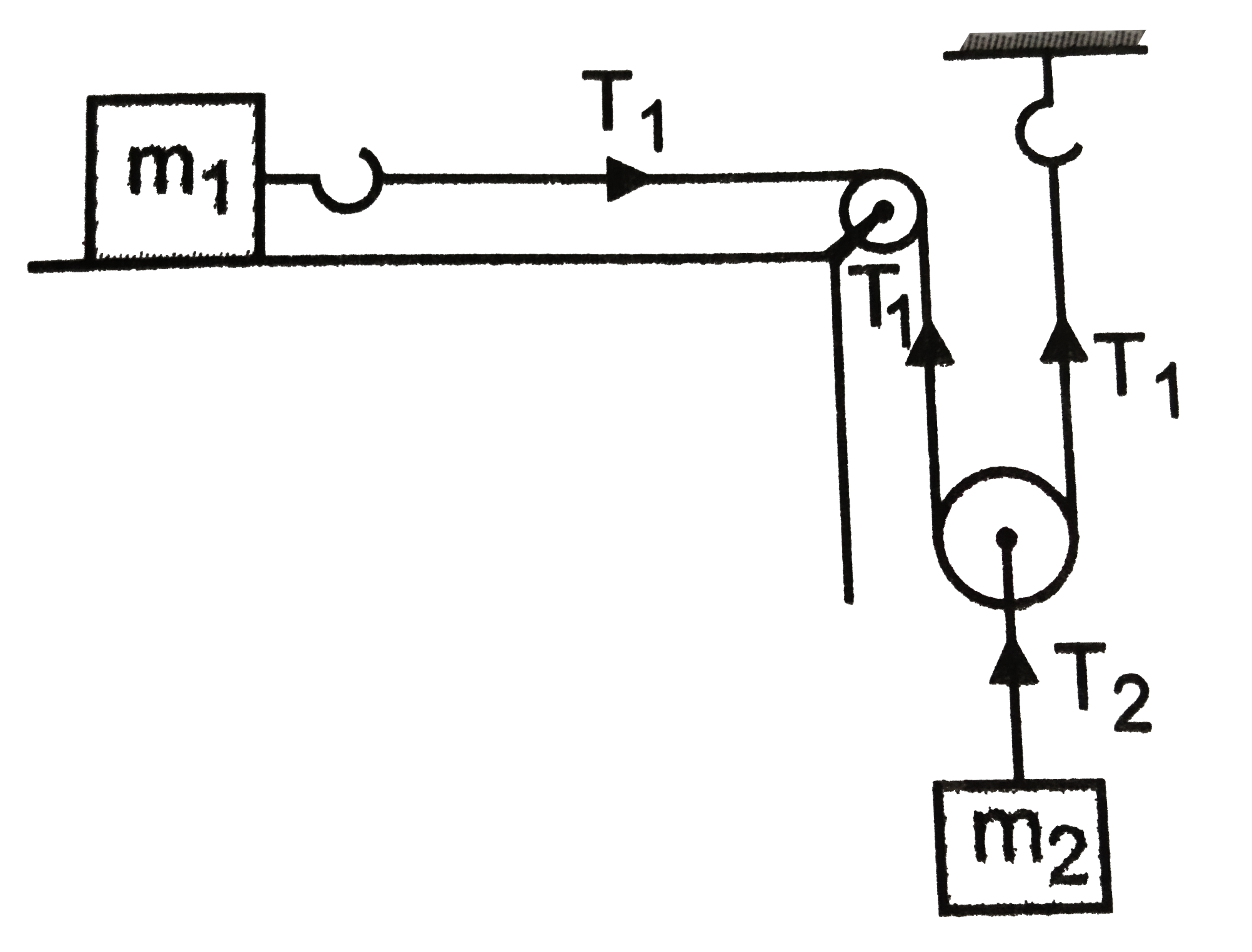A fixed pulley carries a weightless thread with masses and at its ends. There is friction between the thread and the pulley. It is such that the thread starts slipping when the ratio find :
(a) The friction coefficient
(b) The acceleration of the mass when
The correct Answer is:
Step by step video, text & image solution for A fixed pulley carries a weightless thread with masses m_(1) and m_(2) at its ends. There is friction between the thread and the pulley. It is such that the thread starts slipping when the ratio m_(2)//m_(1)=eta_(0) find : (a) The friction coefficient (b) The acceleration of the mass when m_(2)//m_(1)=eta gt eta_(0) by Physics experts to help you in doubts & scoring excellent marks in Class 11 exams.
Updated on:21/07/2023Topper's Solved these Questions
- NEWTONS LAWS OF MOTIONBook:PHYSICS GALAXY - ASHISH ARORAChapter:NEWTONS LAWS OF MOTIONExercise:Advance MCQs
Explore 17 Videos
- LINEAR MOMENTUM & ITS CONSERVATIONBook:PHYSICS GALAXY - ASHISH ARORAChapter:LINEAR MOMENTUM & ITS CONSERVATIONExercise:exercise 1.3
Explore 3 Videos
- RIGID BODIES AND ROTATIONAL MOTIONBook:PHYSICS GALAXY - ASHISH ARORAChapter:RIGID BODIES AND ROTATIONAL MOTIONExercise:Unsolved Numerical
Explore 63 Videos
Similar Questions
A fixed pulley carries a weightless thread with masses m2andm1 at its ends (m2>m1). There is friction between the thread and the pulley. If it is such that the thread starts slipping when the ratio of m2 to m1 is n0. Find :
(a) the friction coefficient
(b) the acceleration of the masses when m2m1=n>n0
[Hint : Consider an element of the thread of width dθ at angular distance θfrom the horzontal diameter of the pulley. The forces at the ends are T and T = dT. If dN is the normal reaction of the pulley on the element than df (frictional force on the element) =μdN Resolving the tensions at the ends along and perpendicular to the radius vector of the element, we have for equilibrium of the element dT=dfanddN=Tdθ Integrate from T1 to T2.T1=m1gandT2=m2g. These are obtained by considering equilibrium of m1andm2]
View SolutionIn the arrangement shown in fig the bodies have masses m0,m1andm2 the friction is absent the masses of pulleys and the threads are negligible find the acceleration of the body m1

View SolutionFind the acceleration of masses m1 and m2 moving down the smooth incline plane. The string and the pulley are masseless and frictionless.
View SolutionA pulley fixed to the ceiling carries a thread with bodies of masses m1 and m2 attached at its ends. The masses of the pulley and thread are negligible, friction is absent. Find the acceleration of the centre of mass(acm) of this system.
View SolutionA pulley fixed to the ceiling carried a thread with bodies of masses m1 and m2 attached to its ends. The mases of the pulley and the thread are negligible and friction is absent. Find the acceleration of the centre of mass of this system.

View SolutionA pulley fixed to the ceiling carries a thread with bodies of masses m1 and m2 attached to its ends. The masses of the pulley and the thread are negligible, friction is absent. Find the acceleration wC of the centre of inertia of this system.
View SolutionIn the arrangement shown in the figure, the blocks have masses 3m,m and 2m, the friction is absent, the masses of the pulleys and the threads are negligible. Find the acceleration of mass 3m.

View SolutionA pulley fixed to the ceiling of an elevator car carries a thread whose ends are attached to the masses m1andm2. The car starts going up with an acceleration a0. Assuming the masses of the pulley and the thread as well as the friction to be negligible, find:

(a) the acceleration of the load m1 relative to the elevator shaft and relative to the car
(b) the force exerted by the pulley on the ceiling of the car. Given m1>m2.
View SolutionFind the acceleration of m1 and m2 in an Atwood's Machine if there is friction present between surface of pulley and the thread and thread does not slip over the surface ofpulley. Moment of inertia of pulley is I.
View SolutionWhen we ignore friction and mass of pulley what would be the accelerations of the two blocks m1 and m2
 .
.
View Solution

